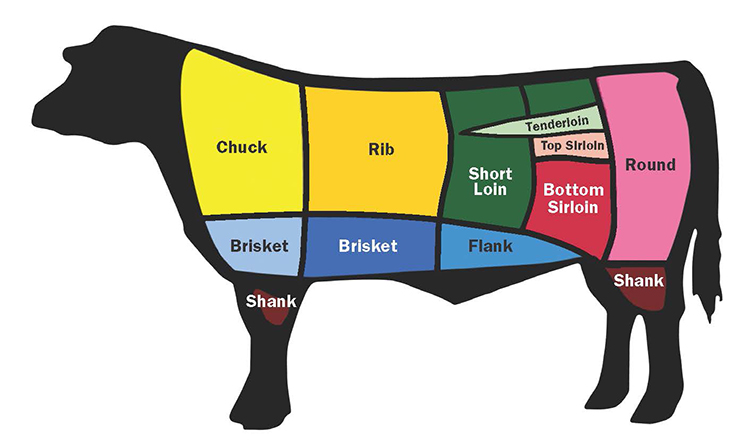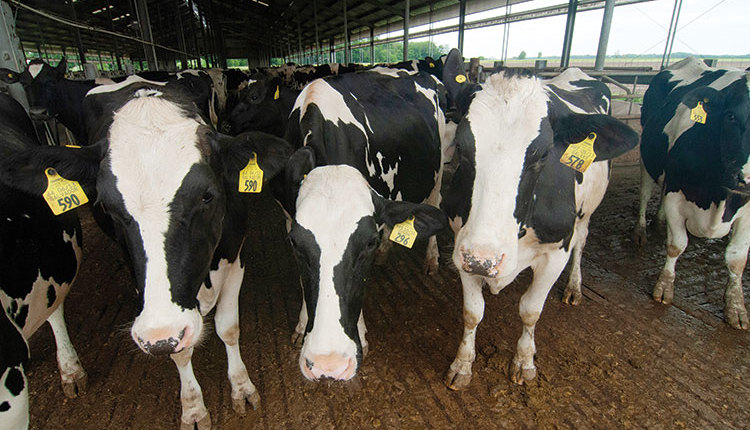
We are in the dairy business with milk being our primary source of revenue, but ultimately, we also sell beef. In the last few years, beef production from the dairy sector, including cull cows, dairy steers, and heifers, has accounted for 19 to 22 percent of total U.S. beef production.
When you consider all the injections given to calves starting at birth until culling or death, the potential for injection-site lesions is real. A cow may receive 15 to 20 injections per lactation cycle. For example, consider what one cow receives if she is exposed to a presynch-ovsynch program before first A.I. breeding after calving, is resynchronized once or twice before pregnancy is established, and receives several postpartum and dry-cow vaccinations.
Quality beef matters
Beef Quality Assurance (BQA) is a nationally coordinated, state-implemented program. BQA provides information to U.S. beef producers and beef consumers of how commonsense husbandry can be coupled with proven scientific evidence to raise cattle under optimum conditions. The guidelines are designed to ensure all beef consumers can be assured that their purchases are top quality.
One assumption for beef quality assurance is that all injectable products cause muscle damage, and all injections should be performed in front of the shoulder to avoid damage to high-value meat cuts. Injections anywhere between the shoulder and the rear end of cows are common in the dairy industry, with reported rates of at least 50 percent of intramuscular (IM) injections of reproductive hormones in the hind leg.
Several reasons may account for the limited use of neck injections for reproductive hormones in dairy cows. First, facilities used during pregnancy diagnosis and other reproductive work cause injections in the neck to be somewhat challenging. Because headlocks are common for restraining cows, approaching and injecting the neck area may be more difficult than administering protocols in the rear end of the cow.
Some believe the efficacy of reproductive hormones varies with site of administration. No specific body site is listed on U.S. FDA-approved labels for administering prostaglandins IM or GnRH intravenous (IV) or IM. The exceptional label injection site for Zoetis’ new concentrated Lutalyse prostaglandin product (HighCon) includes IM and subcutaneous (SQ) options.
The belief that reproductive hormones are less damaging to muscle tissue than vaccines, antimicrobial drugs, and anti-inflammatory drugs may be another reason for not using the neck for injection of reproductive hormones. Even injection of sterile water can cause lesions.
Better round cuts
Progress is being made.
Beef quality assurance is now incorporated into the National Milk Producers’ Federation FARM (Farmers Assuring Responsible Management) program, and it’s evident with this year’s audit that dairy farmers are responding. Frequency of injection-site lesions in the round was down from 60 percent in 1998 to about 15 percent today. More dairy cow carcasses are marketed for high-end restaurant select cuts because Holstein beef marbles so well. The 2012 cull cow audit stated that 75 percent of individual cull cow or bull carcasses were marketed as whole muscle cuts and not as ground beef.
The National Dairy FARM Program strives to help dairy producers manage their operations in ways that ensure quality milk as well as produce beef that will meet consumer expectations. All dairy producers that complete a FARM 3.0 evaluation are BQA certified. For more information, see their very informative website at www.nationaldairyfarm.com.
Injection-site lesions
One study examined muscle lesion damage after five weekly IM injections of prostaglandin (5 cc), GnRH (2 cc), flunixin meglumine (5 cc Banamine), or saline (5 cc) in the semimembranosus or semitendinosus muscles (the upper hind leg muscles or the round). Banamine was used as a positive control because it is known to cause tissue damage when administered IM rather than SQ. Tissue damage was assessed chemically by monitoring blood levels of creatine kinase. The IM injections of prostaglandin and Banamine caused more estimated muscle damage than GnRH or saline.
Prostaglandin is known to cause vasoconstriction of blood vessels and could result in muscle damage by compromising blood flow. One problem with this study was the difference in the volume of products as treatments and the lack of actual tissue inspection of the administration sites. Despite those potential flaws, the results indicate that IM injections of prostaglandin may be causing injection-site lesions more so than GnRH.
Moving forward
Reproductive hormones should be delivered deep in the muscle. Use 1.5-inch needles that are no larger than 18 gauge. This needle gauge and length ensure deep IM delivery of the products. Backflow of injected products can occur so this recommendation makes good sense, particularly when one GnRH product is concentrated into only 1 cc of volume. The BQA guidelines suggest that no more than 10 cc should be administered in one site at one time.
Utilize sterile injection techniques. Endeavor to inject products through a clean area of the neck. Never enter a product bottle with a needle that was already in an animal. Pharmaceutical companies must adhere to strict standards to ensure sterility and safety of their injectable products. Contamination can occur on farm by mishandling and reusing needles. Delivering contaminated products greatly raises the likelihood of infection and can reduce the efficacy of the product being administered.
Neck injections are preferred to hind leg injections to be compliant with BQA guidelines. Where possible, you should comply with these regulations to reduce and eliminate injection-site lesions in high-value meat cuts. Consider these guidelines and recommendations when training employees and administering IM injections. Happy A.I. breeding!







